Both Punxsutawney Phil and Flatiron Freddy have agreed that spring is coming early this year and many Coloradans across the state are itching for it to arrive. As Colorado begins to transition from the cold and dark grip of winter on March 19th (the Vernal Equinox), warmer temperatures, blooming flowers, and our personal favorite, thunderstorms, will start to creep into the state. While severe weather events such as thunderstorms, hail, and tornadoes are often associated with Colorado’s climatic conditions, their occurrence follows a discernible pattern throughout the year.
Severe thunderstorms, defined by the National Weather Service as those with 58 mph winds or stronger and/or 1 inch diameter hail or larger, typically begin to manifest in Colorado around April, intensifying into May and June. Climatological data derived from a 30-year period (1982-2011) of severe weather reports, as analyzed by the NOAA Storm Prediction Center, illustrates the probability of severe thunderstorms on specific dates such as March 25th, April 22nd, May 20th, and June 17th. This data indicates a gradual increase in the likelihood of severe thunderstorms as spring progresses.
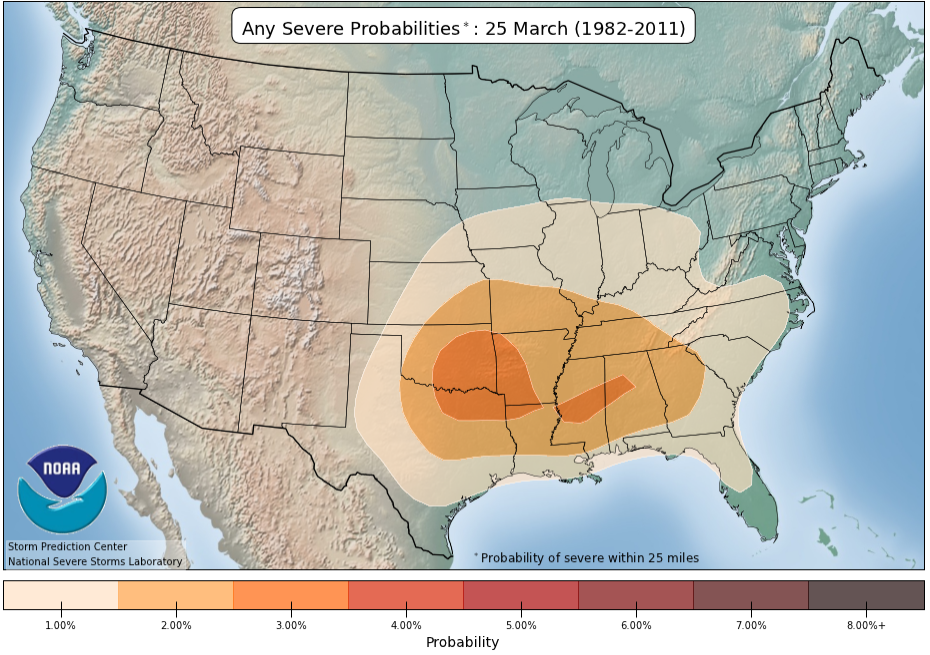 | 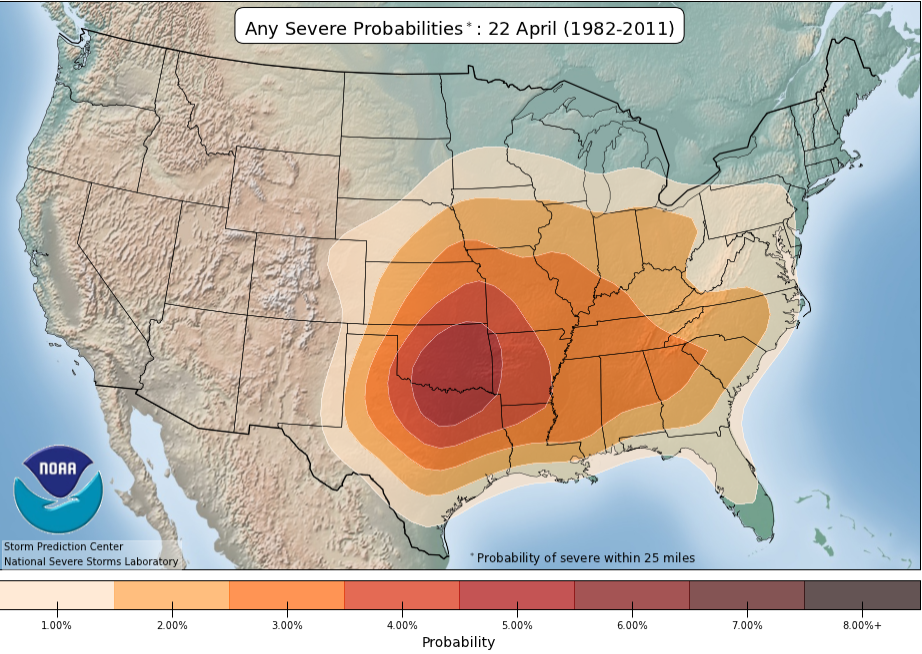 |
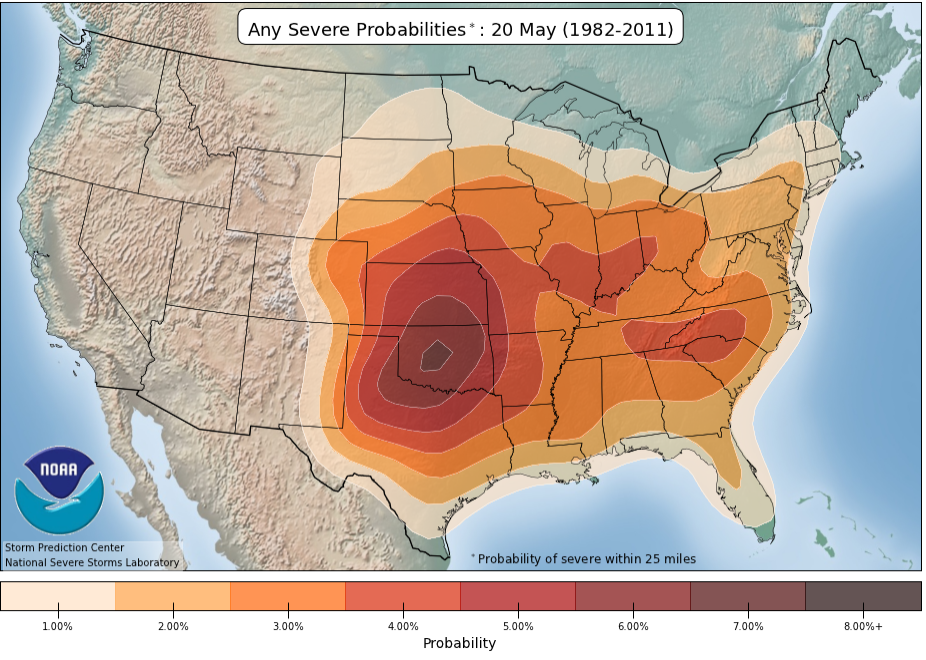 | 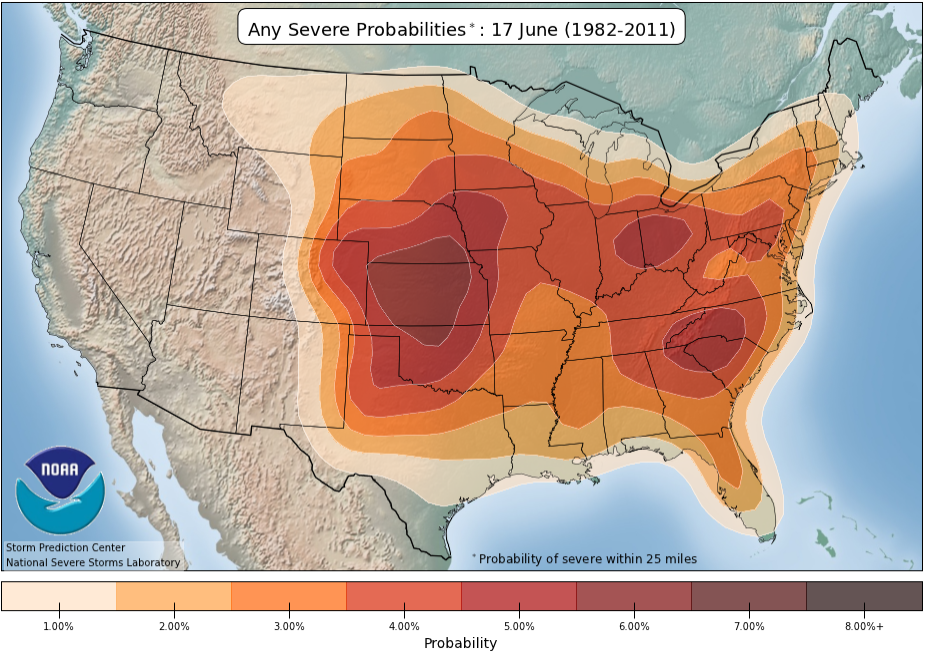 |
Similarly, hail, another characteristic weather phenomenon in Colorado, tends to occur later in the season, with probabilities also increasing as spring advances. While hail probabilities extend further west compared to severe thunderstorm probabilities, they align with the general trend of later onset in the spring.
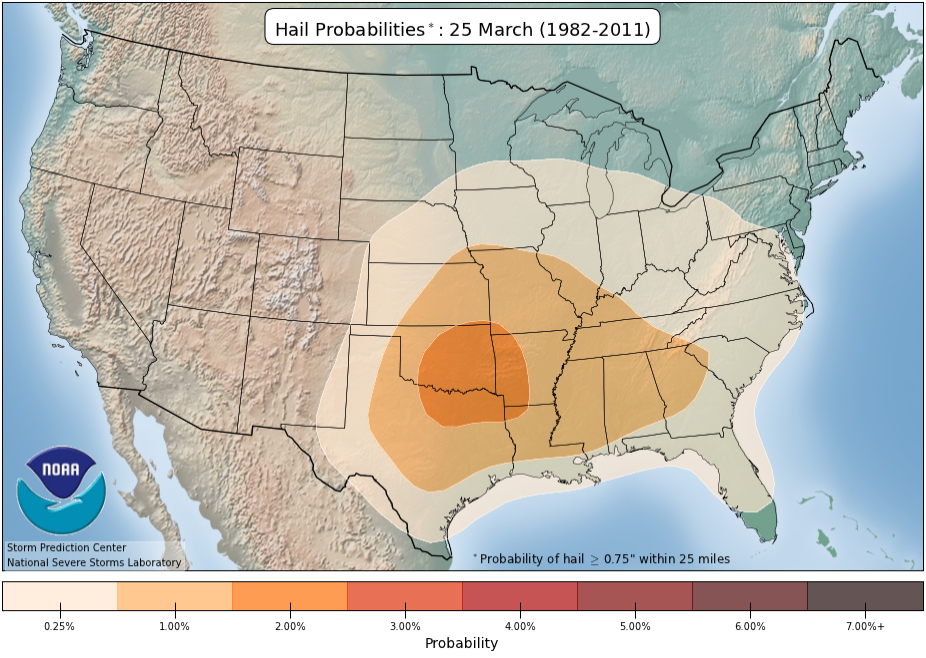 | 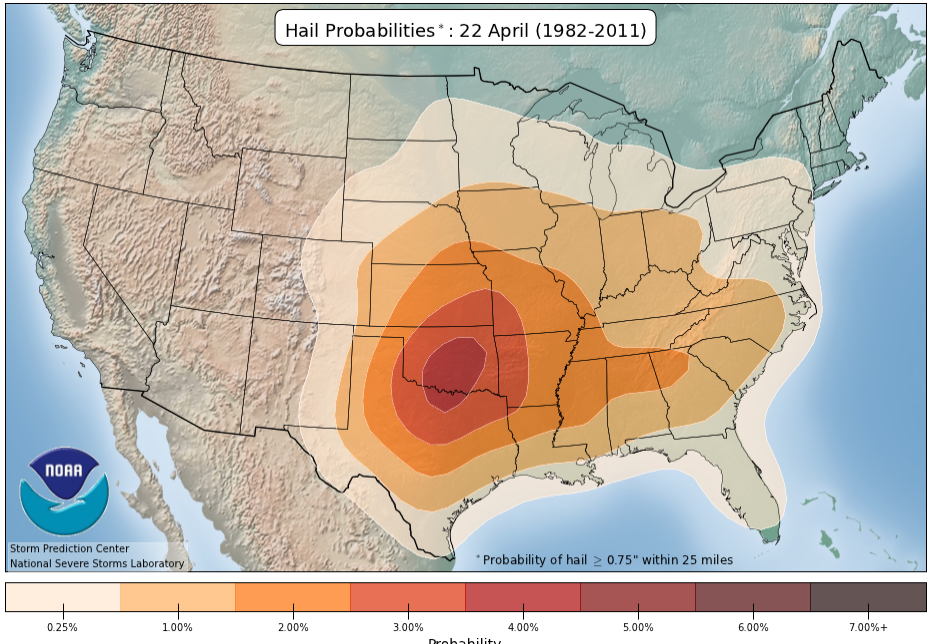 |
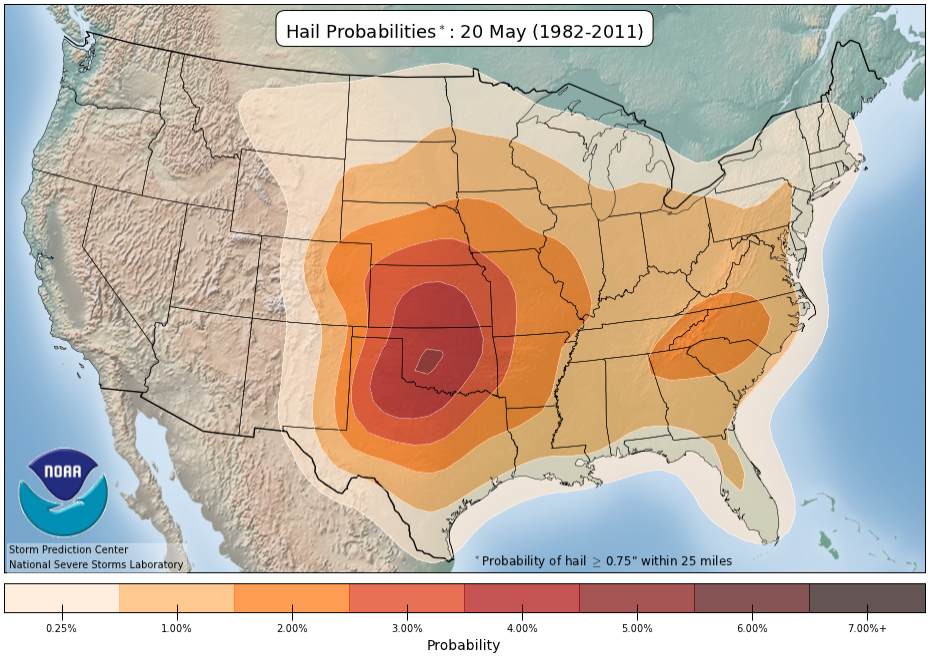 | 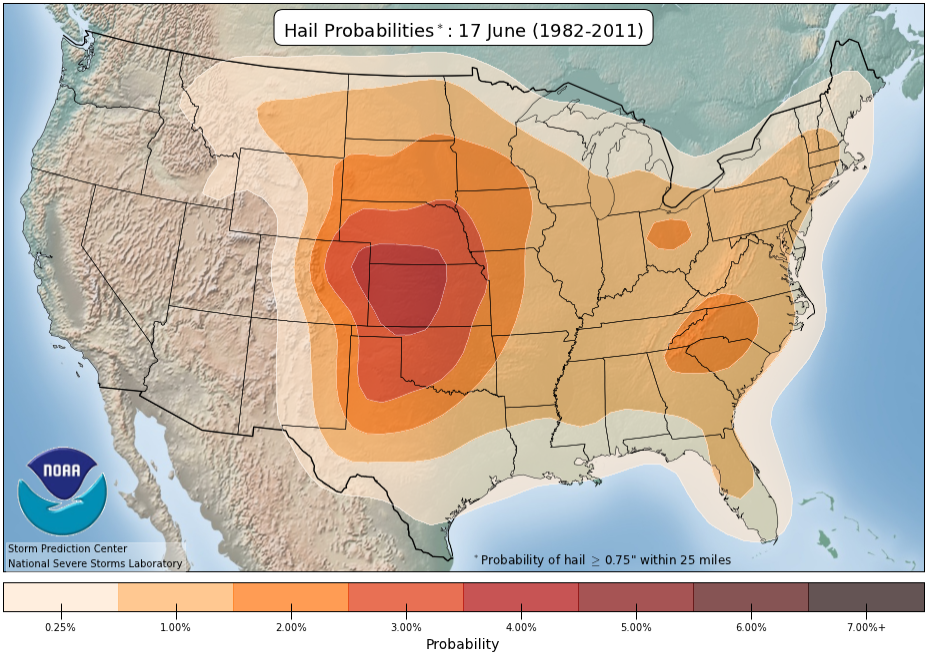 |
Turning to tornadoes, the probability of their occurrence rises notably by April, particularly in the Great Plains region. By June, just prior to the Summer Solstice, northeastern Colorado experiences a significant uptick in tornado probabilities, surpassing even tornado-prone states like Oklahoma and Kansas.
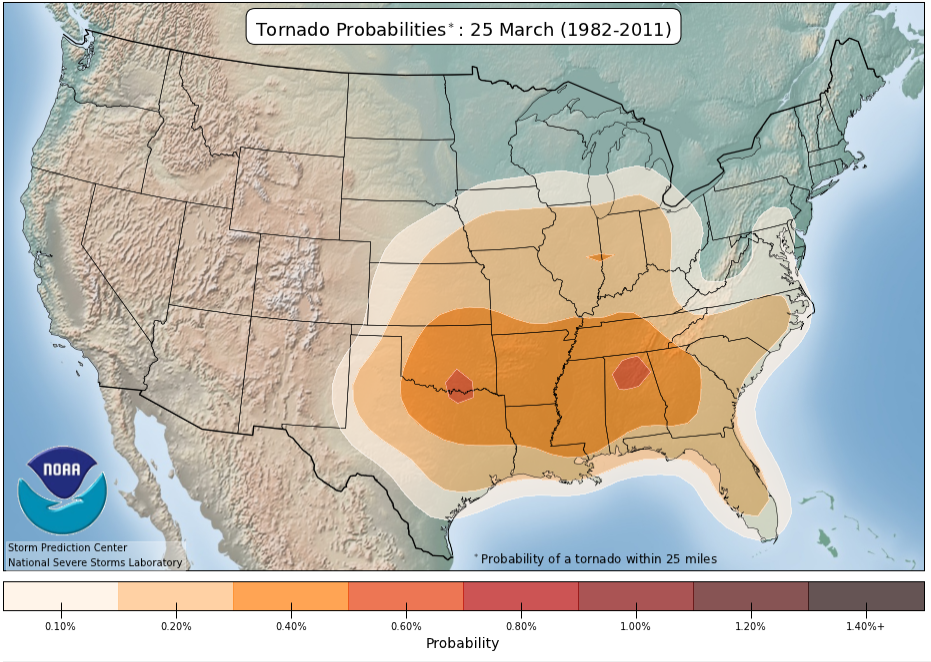 | 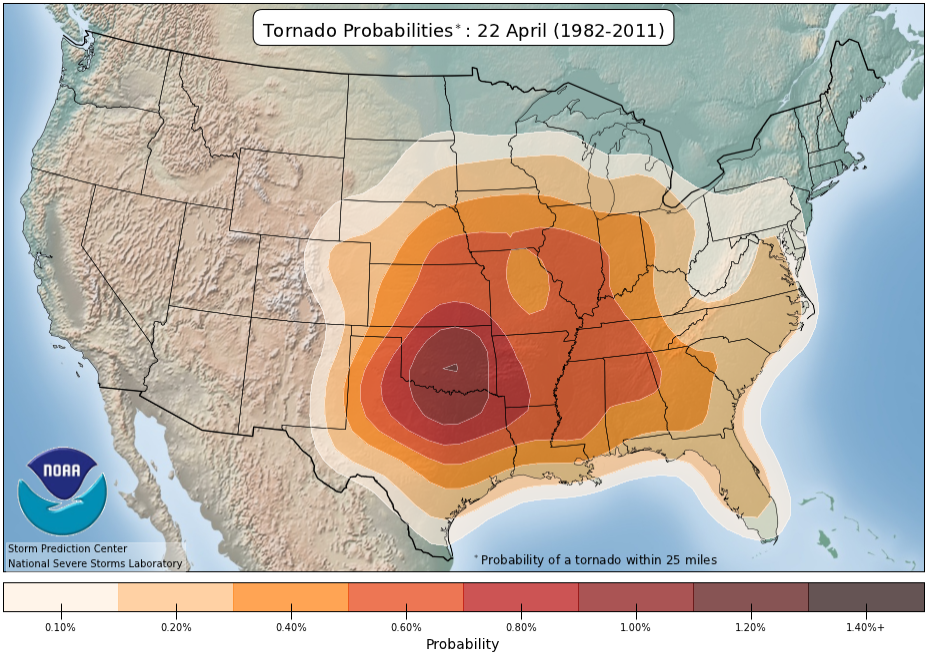 |
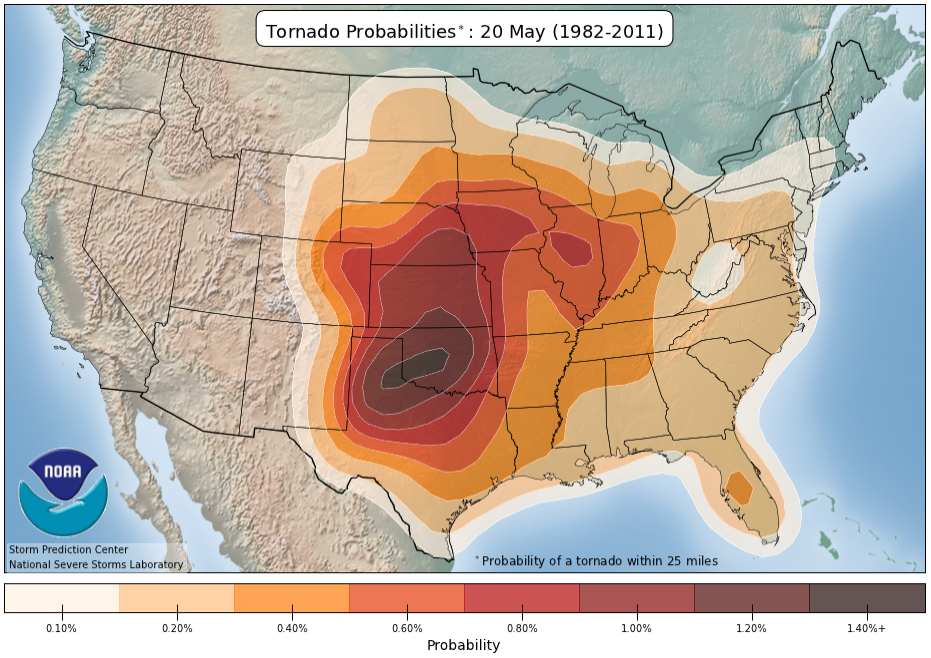 | 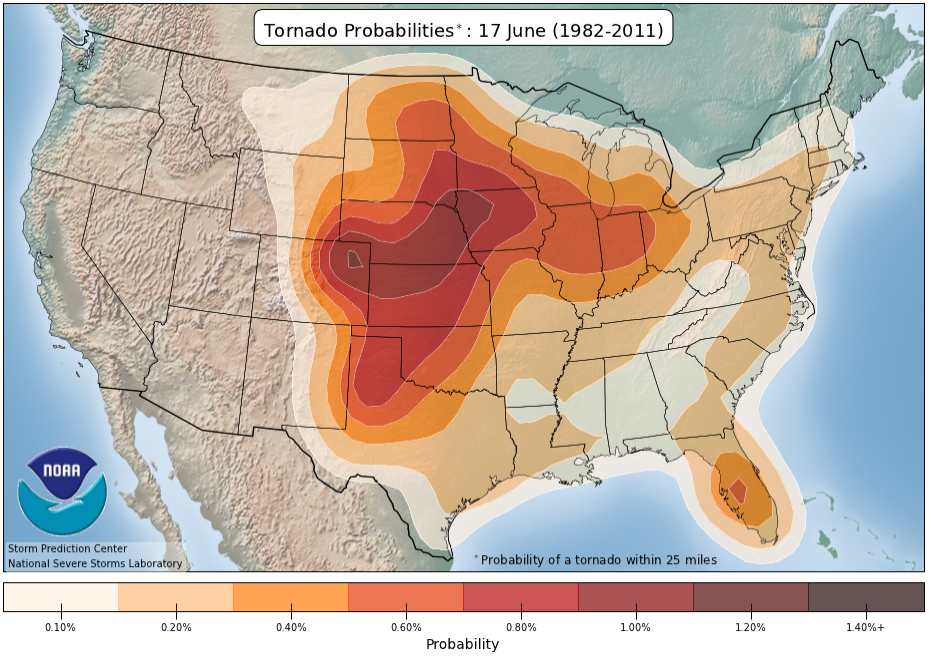 |
Significant tornadoes, categorized as those causing EF2 damage or greater, exhibit different patterns compared to all tornado probabilities. Notably, while Colorado’s overall tornado probabilities peak in June, significant tornado probabilities show a lower percentage, with higher probabilities observed in nearby states such as Nebraska and Iowa.
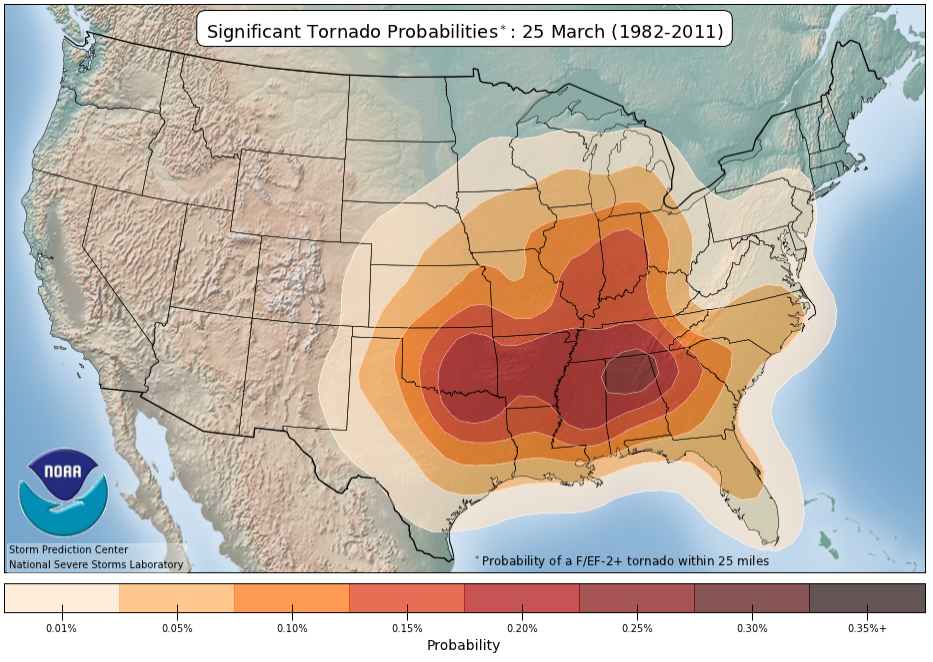 | 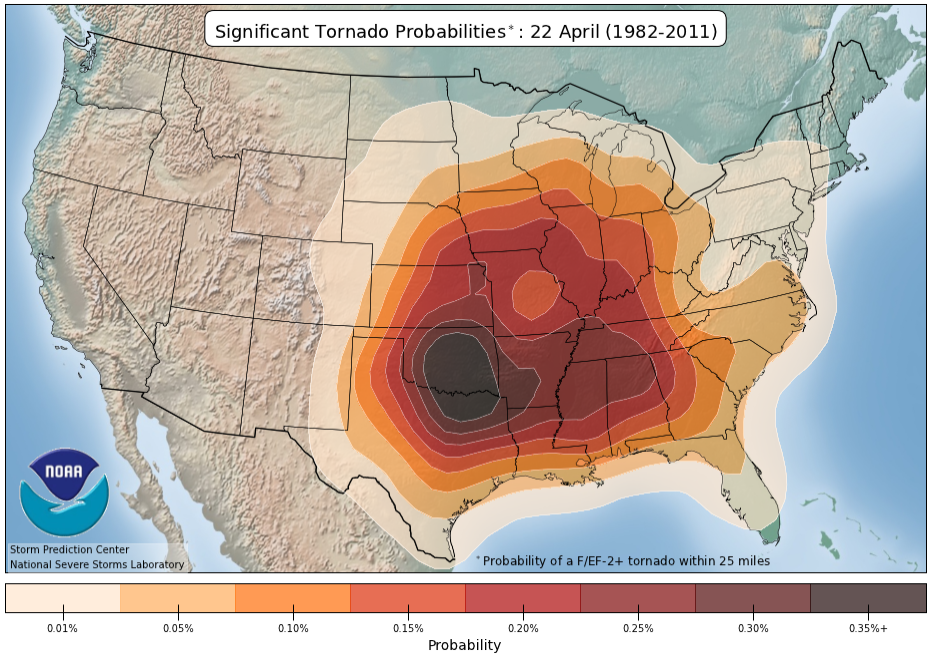 |
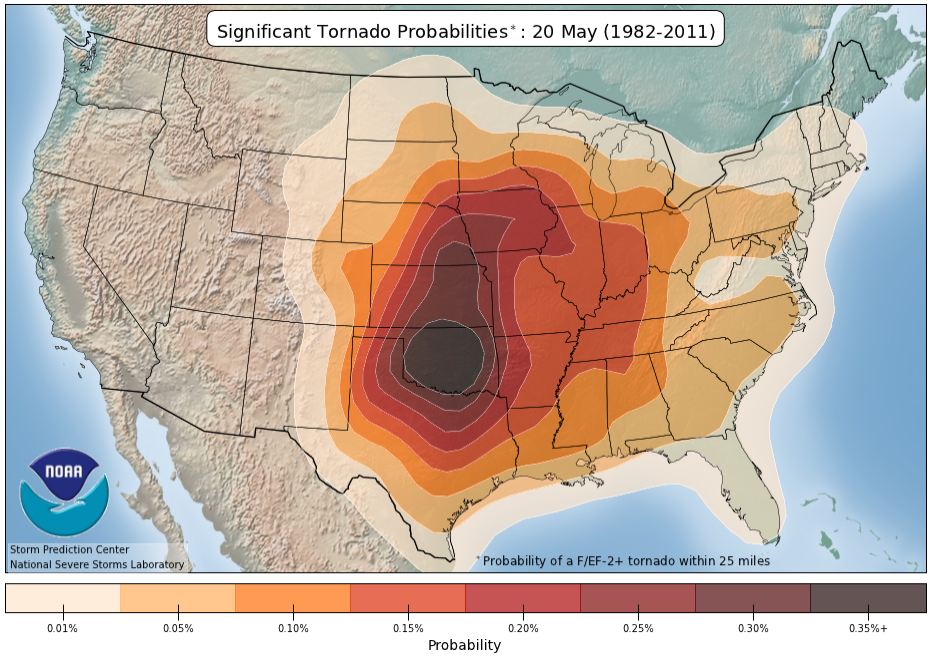 | 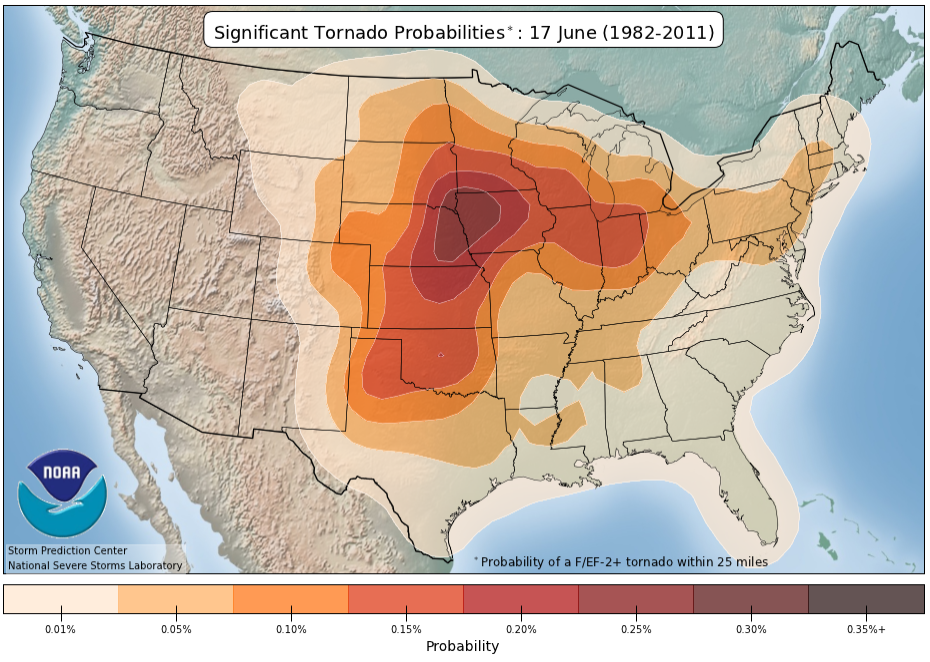 |
It is essential to emphasize that these climatological probabilities serve as a guide based on historical data and do not dictate the occurrence of severe weather events in any given year. Variability in weather patterns means that Colorado may experience severe weather before or after the projected dates depicted. Nonetheless, the data underscores a general trend wherein Colorado’s severe weather season typically peaks in May and June.
As we approach the Vernal Equinox in late March, meteorologists and weather enthusiasts anticipate the imminent arrival of thunderstorms, heralding the transition to springtime in Colorado.
